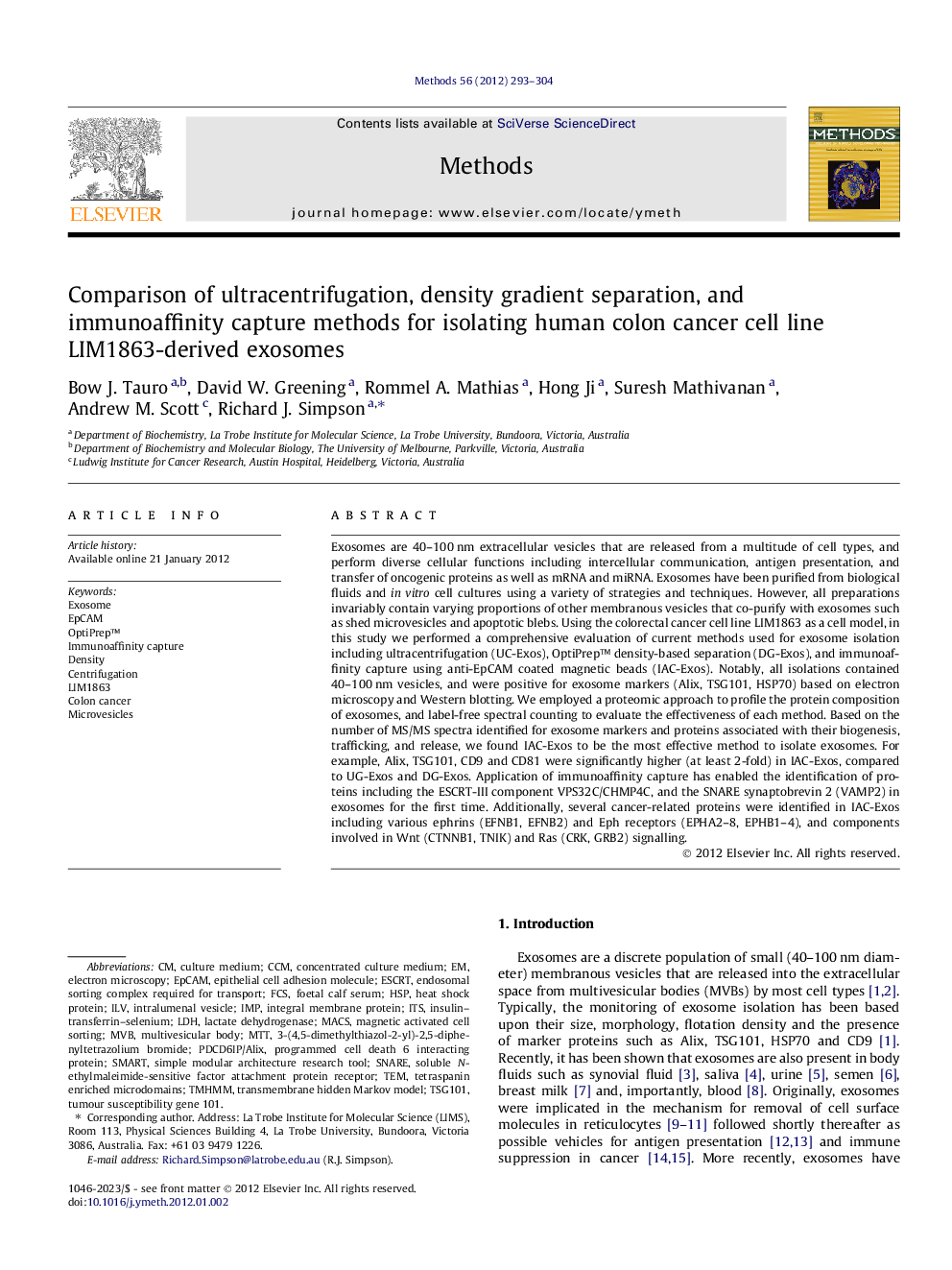| کد مقاله | کد نشریه | سال انتشار | مقاله انگلیسی | نسخه تمام متن |
|---|---|---|---|---|
| 1993527 | 1064675 | 2012 | 12 صفحه PDF | دانلود رایگان |

Exosomes are 40–100 nm extracellular vesicles that are released from a multitude of cell types, and perform diverse cellular functions including intercellular communication, antigen presentation, and transfer of oncogenic proteins as well as mRNA and miRNA. Exosomes have been purified from biological fluids and in vitro cell cultures using a variety of strategies and techniques. However, all preparations invariably contain varying proportions of other membranous vesicles that co-purify with exosomes such as shed microvesicles and apoptotic blebs. Using the colorectal cancer cell line LIM1863 as a cell model, in this study we performed a comprehensive evaluation of current methods used for exosome isolation including ultracentrifugation (UC-Exos), OptiPrep™ density-based separation (DG-Exos), and immunoaffinity capture using anti-EpCAM coated magnetic beads (IAC-Exos). Notably, all isolations contained 40–100 nm vesicles, and were positive for exosome markers (Alix, TSG101, HSP70) based on electron microscopy and Western blotting. We employed a proteomic approach to profile the protein composition of exosomes, and label-free spectral counting to evaluate the effectiveness of each method. Based on the number of MS/MS spectra identified for exosome markers and proteins associated with their biogenesis, trafficking, and release, we found IAC-Exos to be the most effective method to isolate exosomes. For example, Alix, TSG101, CD9 and CD81 were significantly higher (at least 2-fold) in IAC-Exos, compared to UG-Exos and DG-Exos. Application of immunoaffinity capture has enabled the identification of proteins including the ESCRT-III component VPS32C/CHMP4C, and the SNARE synaptobrevin 2 (VAMP2) in exosomes for the first time. Additionally, several cancer-related proteins were identified in IAC-Exos including various ephrins (EFNB1, EFNB2) and Eph receptors (EPHA2–8, EPHB1–4), and components involved in Wnt (CTNNB1, TNIK) and Ras (CRK, GRB2) signalling.
Journal: Methods - Volume 56, Issue 2, February 2012, Pages 293–304